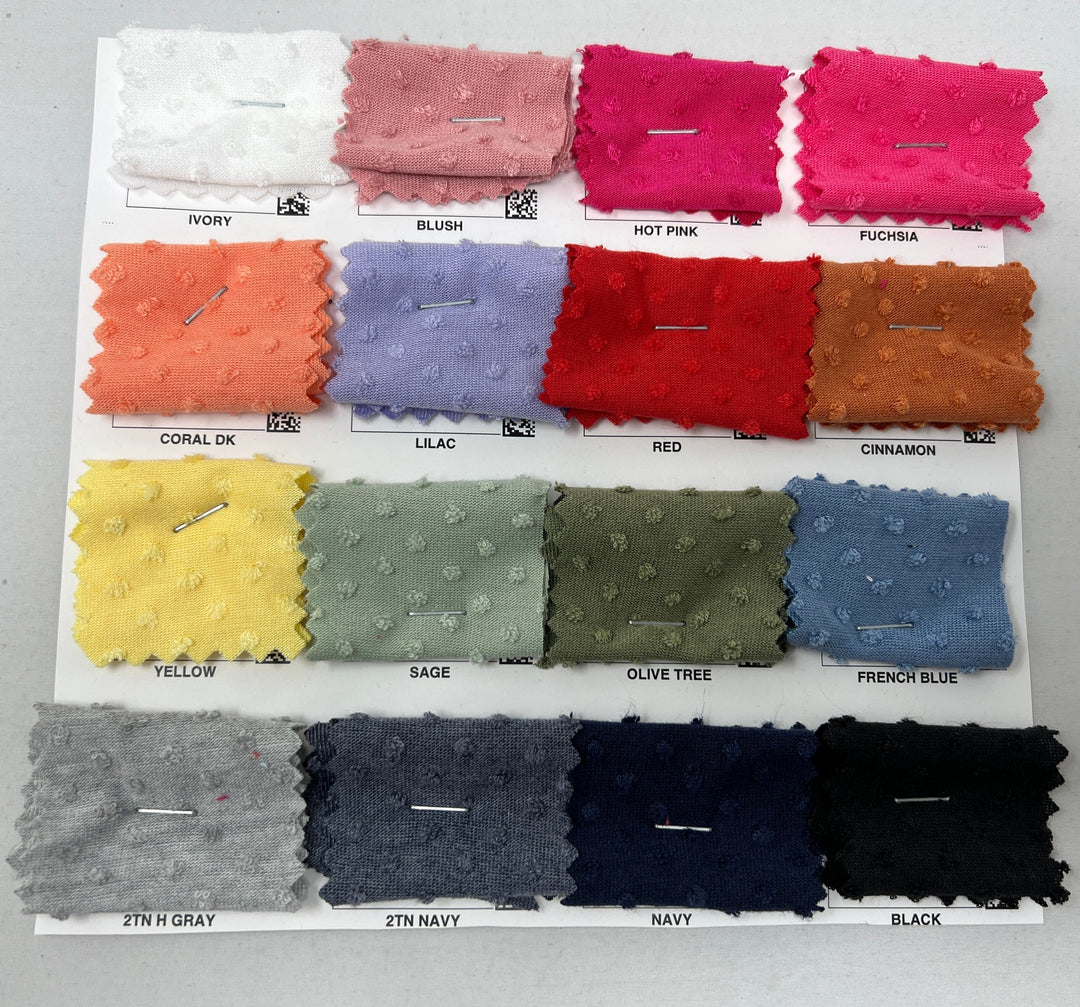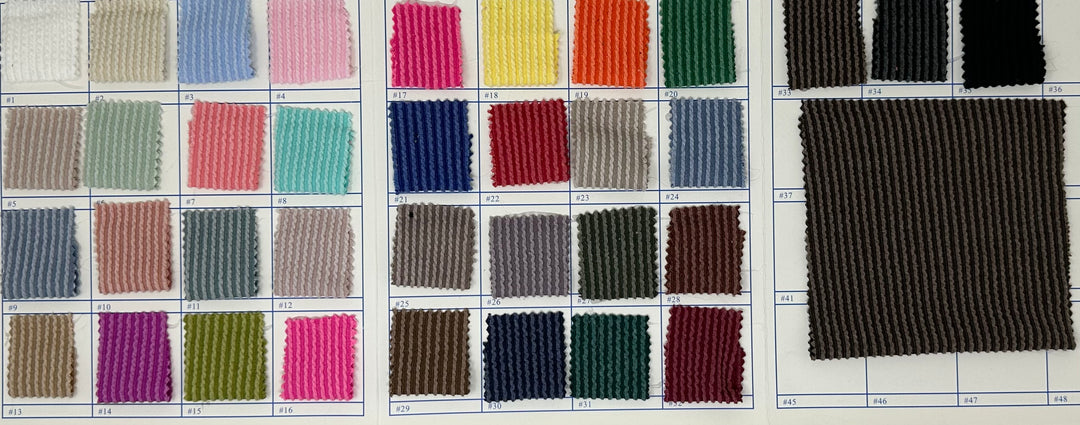What Is Interlock Yarn (and What Can You Make With It)?


Interlock knit fabric has long been a popular material due to its versatility. Manufacturers can use it to make a wide variety of garments. As a double knit fabric, interlock yarn is more flexible and durable than other fabrics. But that’s typically as much as people know about this knit fabric simply through their experience. We’ll answer the question, “What is interlock yarn, and what you can make with it?” in further detail so that you can take this fabric to newer and better heights.
What Is Interlock Yarn?
Interlocking yarn is a variation of the rib knit. The rib knit is a fabric that a manufacturer creates with rows that alternate between being raised and lowered. However, while rib knits only have a single row of stitches, interlocking fabrics have two rows. These rows sit one behind the other. Companies achieve this arrangement by using two rows of needles that cross over each other as they construct the fabric. This process of using two rows is why interlock yarn is also known as double knit fabric. As the rows become interlocked during the knitting process, the fabric becomes noticeably thicker than other varieties, giving it durability and strength.
While it’s a thicker material, the construction of interlock yarn is firm yet features a smooth and soft texture. As a result, people favor double knit fabrics for their comfort and absorbency. ITY print fabrics also exist and feature pleasant floral patterns.
What Is It Made Of?
Interlock yarn can include both natural and synthetic fibers, though natural fibers are preferred because they bring out characteristics like breathability and softness better than synthetic fabrics. Some of these natural fibers include wool, silk, and cotton. These have become the most common and preferred materials. Some secondary materials that manufacturers can turn into interlocked fabrics include polyester, rayon, and modal.
Cotton is likely the most common material that you’ve seen and experienced. It’s not only the most versatile, comfortable, and breathable, but it’s also an eco-friendly fabric choice. Cotton can also work in fabrics suitable for both warm and cold weather environments, although it perhaps can’t compete with the warmth of wool.
Benefits of Interlock Yarn
Now that we’ve touched on the most notable characteristics of interlock yarn, we can discuss some of the unique benefits that arise from such traits. The most notable advantage of interlock yarn is that it’s much easier to work with than other fabrics, making it perfect for DIY projects and aspiring tailors. Some of the attributes that contribute to this ease include the following:
- It doesn’t curl up like other fabrics.
- It’s more flexible compared to other fabrics.
- It looks and feels the same on both sides.
Since it’s affordable and easy to use, you’ll never find yourself wanting when it comes to using interlock yarn for your projects.
Common Garments Made With Interlock Yarn
At this point, we’ve beaten you over the head with all the characteristics and benefits that make interlock yarn so amazing. To give you a better idea of where you’ll find it, though, we must talk about what kind of garments typically include interlock yarn. Because it’s ideal for all temperatures and maintains comfort, interlock yarn is in many clothes. Here are some examples:
- Underwear
- Sportswear
- T-shirts
- Hoodies
- Pajamas
- Baby Clothes
As you can see, interlock yarn is absolutely everywhere, though the specific materials may vary from time to time depending on the application and purpose of a particular garment.
Interlock Yarn’s Ability To Stretch
A common question when talking about fabrics is how stretchy they are. A fabric’s ability to stretch and accommodate different sizes and shapes without breaking the fibers can vary. Stretchy fabrics must also be capable of returning to their original forms. Interlock yarn is naturally stretchy due to the very nature of its construction. Because a single thread holds the two knitted rows, interlock yarn won’t curl up when stretched like other knit fabrics will. Furthermore, if the natural stretchiness of interlock yarn isn’t sufficient, manufacturers can add materials like spandex or lycra to improve elasticity without compromising comfort, strength, or durability.
Interlock Yarn vs. Jersey Knit Fabric
Jersey knit fabric is a knit material that is like interlock yarn. Both are commonly made of cotton, and it can be easy to mistake one for the other. Luckily, there are characteristics in their appearance and quality that can help you tell them apart. Primarily, you can think about how jersey knit is not a double knit like interlock yarn.
One of the most telling differences is that double knit fabric has the same feel and texture on both sides, while jersey fabric has a smooth “front side” and a rough “back side” that typically lacks any pattern or print that you’d find on the smoother side.
Due to its structure, interlock yarn will always be thicker than jersey knit. This makes the fabric distinctly warmer and more durable, allowing it to work in a wider variety of projects than jersey knit fabric. Interlock yarn is more stable and capable of retaining its shape.
Lastly, jersey knit fabric will have weaker stretch than double knit fabric. Jersey knit will often have a higher percentage of spandex or lycra to compensate for its relative lack of stretchiness. If you can’t quite tell simply by stretching the two fabrics, see which fabric has more spandex or lycra.
Identifying Interlock Fabric
Now that you know what interlock fabric is and what you can make with it, you should have a much easier time identifying interlock yarn fabrics when you see them. The easiest way is to compare two samples so that you can physically feel and test the fabrics. For example, you can consider a fabric’s ability to stretch and its material makeup. Looking at these will enable you to tell the difference between double knit and jersey knit fabric.
Another key characteristic is the double-sided nature of the double knit fabric, which allows manufacturers to sew it on either side. Either way, it will feel the same, whereas other fabrics only have a single side that is smooth and textured.
















